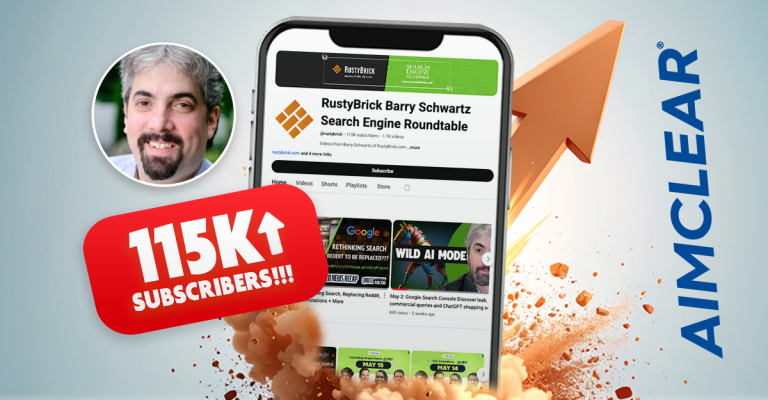
Whoosh! The Converting Visitors Into Buyers seminar at Search Engine Strategies New York felt like a whole day chock full of my daily dose of conversions!
This seminar was moderated by Aaron Shear, Search Engine Watch Expert and Partner, Boost Search Marketing.
The speakers were:
- Mike Moran, Distinguished Engineer, IBM ,Nigel Ravenhill, Program Manager, McAfee, (and author of the new book, Do It Wrong Quickly)
- Michael Sack, Director, SEM technology & Development, Idearc Media Corp.
- Howard Kaplan, COO, Future Now Inc.
WRITER’S NOTE: This seminar was so full of excellent and actionable information that it won’t all fit in one post! This is part one…
STOP WHINING, THE DAYS OF MAGIC EYEBALLS ARE LONG GONE…
Mike Moran started his presentation with the following statement:
“you need to apply direct marketing methods to your website.”
(collective gasp)
Moran says that in order for sites to be more successful, we have to stop saying things like “customers like how the website looks,” and “we did the redesign under budget!” Directing marketing is run by the numbers so we need to start asking questions like:
- What were top selling products?
- How are we doing in sales compared to last year?
- Which items should we stop selling?
- What are our competitors selling?
If you were evaluating and testing a website like a direct marketer, you’d look at things like:
- segmentation: keywords lists are culled by demograhics, firmographics, RFM and other factors
- message: is the message persuasive enough?
- testing: write multiple versions, analyze response, test responses to multiple designs, monitor over time and adjust (even .01% increase in conversion is good)
- response: conversions rates are low but costs are too
One good thing for web marketers vs. direct marketing. Web marketing is MUCH cheaper than direct marketing.
- lead for search = 45 cents
- lead for direct marketing = $10
What are conversions? They’re not just cart checkouts…
- online sales (shopping cart checkout)
- find a store, dealer, or a partner (buy offline)
- phone call
- affiliate link
- download a white paper (might be an entree into more revenue)
- fill out a contact form
There are only two factors you can increase conversions:
- improve the website to raise conversion rate
- bring more people
How do you track offline conversions to the web?
You need to be able to track back.
- specify a phone number used only on the web.
- coupon configured on website, printed up and brought to store
- configure a car online, bring specs to a dealer for price quote
What are your web visitors doing if they’re not buying? They’re participating in the conversion cycle:
- Learning: research products and services
- Shopping: compare offerings and prices
- Buying: checkout and purchase
- Getting information: check order status
- Using: get technical and customer support
All these steps are important. You should also be trying to gauge mini-conversions, like how many users are converting to learning about your product to shopping.
Consulting sites also have a conversion cycle:
- learn
- engage
- select
- collaborate
Get customers back into the buying cycle
Whether you are retail or service-based, every contact with the customer is a way to get them back into the buying cycle:
targeted emails to users based on their activity on your site (Ebay sends you a list of items from your favorite sellers)
sending an e-mail to a user if they’ve abandoned the sale
banner ads with a better price than when the user left your site
Banner ads with better offer than when you left (if you abandoned a site).
What can I change on my site to improve conversions?
Answer: everything, and right now.
Change products, content, prices, policies, experience, then change again.
Most of what we do is wrong. Everything we do is an experiment. Let the market tell you what works and what doesn’t. Tweak something every day. See how it performs. If it works, keep it. If it doesn’t, change it again.
OLD THINKING: We’ll change stuff during the next redesign
NEW THINKING: Do it wrong quickly and fix it
Example: Amazon wanted to know what was better, having the shopping cart on the left or the right? They did A/B testing for a week, and found that sales were 1% higher with it on the right.
Next up to speak was Nigel Ravenhill, Program Manager at McAffee. He did a short presentation on website conversion statistics. Apparently there isn’t a lot of data on site conversion rates across retailing, but gave some resources:
- Internet Retailer Top 500
- Shop.org releases State of Retailing Online
What affects conversion?
Macro level
- competitive scope of product category
- number of competitors online
- age demographics
- overall brand recognitition
Micro level
- site design
- pricing
- shipping costs
- alternative payment options (google checkout)
- user/product reviews
- warm and fuzzies
Cookie Comparisons
Conversion testing methodology makes use of something called a “30-day persistent cookie.” This is important because most purchases are not made the first time through the site, there is usually a return to purchase (average of 34 hour delay).
Nigel showed some conversion data between 2007 and 2008, and showed some differences between low conversion rate products with low brand equity like office furniture (.86%) or booksellers (.86%) and high conversion rate products with higher brand equity like pre-paid phone cards (16.68%) and auto loans of a global bank (24.81%).
The average conversion rate of around 350 sites profiled rose from an average of 2.07% to 2.71%.
Michael Sack,
Howard Kaplan, COO of my favorite blog right now, (Future Now, Inc.) was the last speaker of the session. In contrast to many of the other very detail-oriented conversion authorities around, Howard seems to have a casual attitude towards the conversion process. He made a comment that made many in the room hold their breath:The secret to conversion is: it’s not about you.Howard says that conversion is a choice by your visitors. Clicks are people, links are decisions. All you can do is understand who your visitors are and what they need.He had the room stand up, then down in sections to demonstrate why customers won’t convert.
- The first section you lost didn’t belong on your site in the first place – they were looking for Rolling Stones the band and found Rolling Stones the magazine (the favorite analogy of the conference it seems for misplaced site visitors).
- The second section of visitors you lost were the right customer, but you had the wrong price for them.
- The third section you lost were close but no cigar: they were the right customer, you had the right price, but it was too early in the buying process – or you didn’t answer all their questions right.
- Hurray! The last 25% decided to convert!
For you to achieve goals, visitors must achieve their goals first.
Here come those archetypes again…
Howard brought up the four archetypes that are used heavily by Future Now, Inc., but in an easy to understand analogy: Seinfeld characters.
Spontaneous Kramer. Competitive Kostanza. Methodical Elaine. Humanistic Seinfeld.
But he added that you don’t need to be a behavioralist to optimize your site, and you don’t need to think in absolutes. You can bring it down to just two:
- quick vs. deliberate (pace)
- logical vs. emotional (bias)
A lot of web optimizing is geared towards competitive user (all above the fold, nav and links need to be perfect).
Roadmap for testing
- Define conversion goals: what action, what page, what’s success look like?
- Define your profiles: how many profiles? What types? Where are they in the buying cycle?
- Do the creative: create the driving point (ppc, email, etc.) Does the message match the motivation, type and buying process?
Where should I test first?
Test where customers are leaving from – high bounce rate pages, high exit pages.
5 testing tips to help increase conversion
- Product images tell a story: make sure your pictures aren’t just perfunctory. Would you rather buy a pear just shown sitting on a table, or a cut pear on a beautiful plate, with juice running down it? Also include multiple images, zoom, and video if helpful. Even things like white papers can be merchandised to be more appealing.
- Test your headlines and copy: do tests with slightly varied headlines, call to action button changes, benefit text changes. For example, Dell increased conversion when they changed one link from “learn more” to “help me choose.”
- Forms & point of action assurances: reassure the customers they are making the right decisions by putting it out there, “we value your privacy,” or “100% satisfaction guarantee”
- Calls to action – get them to click: make it the easiest thing in the world for them to trust you – given them shipping and delivery information early in the cart process,
- Don’t make them wait: remove gratuitious flash or heavy images
Conclusion: Goal in testing for improved conversion is to just move the needle, you don’t need to hit a home run.








